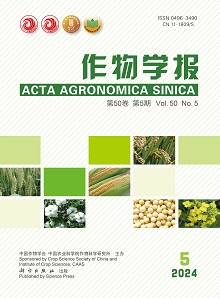The temporal and spatial distribution of cotton pre-summer boll, summer boll, early-autumn boll, and late-autumn boll (“four peaches”) are different, but there are few reports on the difference of their fiber yield and quality, as well as response to nitrogen (N) rates and mepiquat chloride (DPC) application. From 2015 to 2017, we employed a split-plot design in randomized complete blocks in this work in the Yellow River beach area of Zhengzhou city. The main plots were assigned to N fertilizer rates, namely no N application (N0), normal N (N1), and excessive N (N2), with the rate of 0, 225, and 450 N kg hm-2, respectively. And the subplots to DPC dosages, namely no DPC (D0), normal DPC (D1), and excessive DPC (D2), with the dosages of 0, 75, and 150 g hm-2, respectively. The effects of N fertilizer and DPC combined application on temporal distribution of cotton yield and fiber quality were studied. The results showed that: (1) The fiber yield of N1 treatment increased by 36.79% and 3.72% compared with N0 and N2 treatments, respectively, and N2 treatment did not significantly decrease the yield compared with N1. The fiber yield of D1 treatment increased by17.53% and 8.50% compared with D0 and D2 treatments, respectively, and D2 treatment decreased the yield significantly compared with D1. The fiber yield of N1D1 combined treatment was the highest, and yield of all the other combined treatments decreased by 1.15%-51.53% compared with N1D1. The proportions of fiber yield of pre-summer boll, summer boll, early-autumn boll, and late-autumn boll with N1D1 combined treatment were 8.89%, 45.35%, 33.41%, and 12.36%, respectively. Both summer boll and early-autumn boll were main yield components, but the early-autumn boll had the highest intensity of yield formation in particular. And with the increase of N application rates, the proportions of fiber yield of early-autumn boll and late-autumn boll increased, but DPC application dosages showed the opposite characteristics. (2) With the exception of the fiber elongation, fiber length, fiber length uniformity, fiber strength, and micronaire value of “four peaches” were significantly affected by N fertilizer rates and DPC dosages. The optimal fiber quality was harvested with N1 treatment compared with N0 and N2 treatments, and D1 treatment showed the highest-grade fiber compared with D0 and D2 treatments, but the fiber micronaire values with D0 treatment was the best. N and DPC combined treatments had significantly interaction effect on fiber strength and micronaire value, and N1D1 had the best fiber strength and micronaire value with “four peaches” among the different treatment combinations, while N2D2 showed opposite trend. Moreover, the excessive using of N fertilizer and DPC led to the degradation of fiber micronaire value. (3) The fiber quality of “four peaches” were different. The fiber length, fiber length uniformity, and fiber strength of pre-summer boll were poor, but its micronaire value was higher grade, and the fiber quality of summer boll and early-autumn boll had exactly the opposite effect. As for fiber quality of late autumn boll, the elongation was the best, and the other quality index were in the middle. These findings enriched the theoretical basis of the yield and quality difference of cotton “four peaches”, and provided scientific supports for rational application of N and DPC in cotton fields and reasonable utilization of the fiber of cotton “four peaches”.

 WeChat
WeChat
 WeChat
WeChat